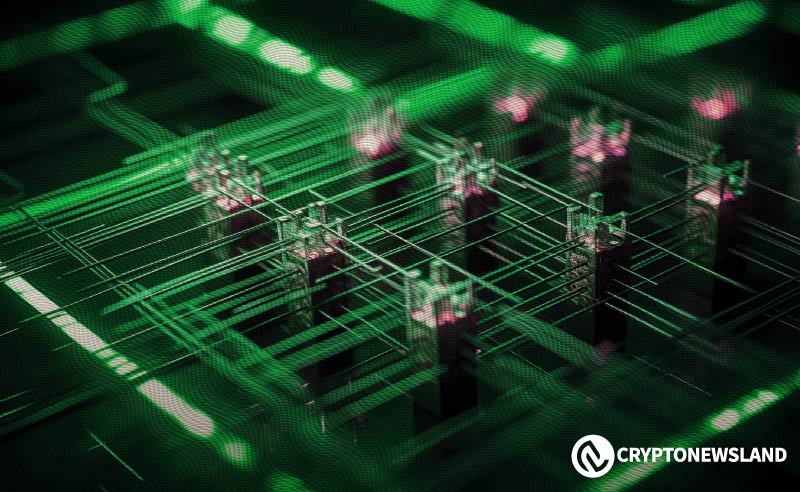Musk’s robotaxi reveal could be make-or-break moment for Tesla
Tesla has been teasing its upcoming “We, Robot” event as a big reveal, but it’s unclear exactly what the company intends to showcase at the Oct. 10 event in Hollywood, California.
According to nearly all reports, CEO and billionaire technology mogul Elon Musk is expected to unveil a fully autonomous “robotaxi” vehicle. Rumors indicate that the vehicle will be a three-wheeled coupe or a minivan manufactured without a steering wheel, pedals, or any other method of traditional manual control.
Tesla teases its Oct. 10 “We Robot” event on X.com. Source: Tesla
Other pundits have speculated that Tesla will release a new model (perhaps a replacement for the defunct Model 3) or an update on the long-awaited Tesla Roadster. And, of course, based on the title, “We, Robot,” many are predicting that Optimus, the company’s humanoid robot prototype, will make an appearance as well.
The future of autonomy
On the event’s website, however, the only official indication of what’s planned is a now fully booked invitation to “watch a livestream of our We, Robot event where you’ll see the unveiling of the future of autonomy.”
The future of autonomy may be an upgrade to the company’s Smart Summon feature:
“Experience Full Self-Driving (Supervised), featuring our latest innovation: Actually Smart Summon.”
Musk has promised to deliver fully autonomous vehicles since at least 2014, often claiming that Tesla was within a matter of months or that the first models would ship within the next year.
Time and again Musk’s self-imposed deadlines have come and gone with no indication that the technology has progressed beyond the current state-of-the-art.
Fully autonomous
The discourse surrounding Tesla’s progress in the field of autonomous vehicles centers around two key ideas. Firstly, the company has so far committed to what’s called a “vision-only approach.”
One of Musk’s key selling points for the company’s current driver assistance software packages has been that every Tesla vehicle the company ships has all the hardware it will need to become “fully autonomous.”
To accomplish this, Tesla needs to crack fully autonomous driving using nothing more than the cameras currently installed in all of its production model vehicles. In contrast, competitors in the field of fully autonomous vehicles, such as Waymo, use a combination of cameras and other sensors including LIDAR.
Related: OpenAI may not turn a profit until 2029 despite rapid growth
The second focal point when it comes to Tesla’s promises concerning fully autonomous vehicles is what’s called the “edge cases problem.” It’s widely agreed that Tesla and other organizations working on vehicle autonomy have solved somewhere between 90 and 99% of the challenges associated with getting a car to drive itself as safely as a competent human driver.
Where autonomous cars fail, however, are in the types of situations that the engineers designing the vehicles can’t always prepare for. When these vehicles encounter an edge case, such as an unexpected obstacle or inclement weather, their behavior can become unpredictable.
Current driver assistance systems, such as Tesla’s Autopilot and Full Self-Driving software, are meant to be used with human intervention available.
When analysts measure the efficacy of a given autonomous driving system, they’ll often refer to the number of times humans had to intervene to avoid an unsafe situation or get the computer driver unstuck from a situation it can’t figure out.
Interventions and prototypes
Analysts watching the Oct. 10 event will be waiting not only to see if Tesla unveils an autonomous vehicle, but if Musk or a company representative discusses how many miles per intervention the vehicles can go in terrain they haven’t been explicitly trained on.
Ultimately, however, it’s possible they’ll provide only a demonstration of an advanced version of the company’s current Summon feature.
While this could be a treat for Tesla owners or those considering a purchase, it might leave investors and shareholders feeling underwhelmed. It might take more than updates to current systems and the specter of another future-facing prototype with robotaxis and full autonomy is still just around the corner.
Analysts such as Cathy Wood, founder of ARK Invest, have predicted that autonomous vehicles will make Tesla trillions of dollars in revenue. However, the company may need to demonstrate real progress in the autonomous vehicle arena in order to shore up those expectations.
Magazine: 10 crypto theories that missed as badly as ‘Peter Todd is Satoshi’
Disclaimer: The content of this article solely reflects the author's opinion and does not represent the platform in any capacity. This article is not intended to serve as a reference for making investment decisions.
You may also like
Fantom’s Solid Pattern of Higher Lows: What’s Next for FTM Price?

LINK’s Nearly 5% Daily Jump Sparks Optimism- Will LINK Reach $20 Soon?

Sonic Soars Over 6%—Can a Successful Breakout Send It Toward $1?

Solana’s Path to $3,800—Will It Hold Above $130 This Weekend?

